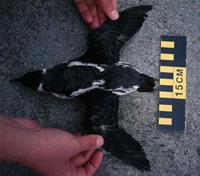Welcome to our ongoing effort to catalog citizen science and other public participation in scientific research (PPSR) projects for UC California Naturalists and other citizen scientists. We invite you to browse the listed projects or enter key words (like birds, youth, invasive, coast, Alameda, etc.) in the search box above to find projects in your area. It's a great way to stay involved and keep developing your skills as a natural scientist!
A vast majority of the information in the database was gathered from project websites and may be out of date. We encourage you to contact projects directly to get involved and learn about most recent opportunities. If you work with a listed project and would like to add to, update, or correct the information we have, please email cghdixon@ucdavis.edu. Also, please consider filling out the "PPSR perspectives" survey. Click here to access the survey, which will help guide this project in the coming year.
If you know of a project not on our list, please go to the "tell us about a project" link on the left so we can list the project here. Thanks for your help!
Special thanks goes to the National Science Foundation Informal Science Education program and the Stephen J. Bechtel, Jr. Foundation for supporting this database of projects.
Beach Watch
-
Organization NameFarallones Marine Sanctuary Association
-
Project Website
-
Organization Website
-
PartnersGulf of the Farallones National Marine Sanctuary
-
Contact NameKirsten Lindquist
-
Contact Emailklindquist@farallones.org
-
Contact Phone(415)561-6625x302
-
Other Contact InformationN / A
-
Project Purpose (taken from project materials)
- Provide a baseline dataset on the presence of live and beach cast marine organisms;
- Assist Sanctuary management in the early detection of natural and human-caused environmental events;
- Develop a network of volunteer expert surveyors who can respond during an oil spill; and
- Educate the public about the coastal environment and how they can make a difference in protecting their beaches.
-
Participant Activities
Participants conduct bi-monthly surveys of over 150 miles of coastal beaches from Point Ano Nuevo in San Mateo County north to Bodega Head in Sonoma County. Volunteers collect data on live and dead species of birds and marine mammals. They also report violations, detect oil pollution, and collect oil samples.
Survey methods along each beach segment include:
- Live bird and marine mammal count,
- Visitor/dog activity notation,
- Beached (dead) vertebrate documentation,
- General wrack and invertebrate assessment,
- Oil/tarball documentation, and
- Streams and lagoons status
-
Data Entry
-
Website
-
Data Sheets
-
-
Other Participant Activities
Other opportunities to volunteer include:
- Visitor Center Naturalists
- Sanctuary Ambassadors
- Sharkmobile volunteer
- Snap Shot volunteer, to gather water quality information (with one day training required)
- Office Volunteer
- other Special Events
-
System Studied
-
Marine
-
Intertidal zone
-
Pollution Clean-up or Monitoring
-
-
Geographic ScopeRegional
-
RegionNorthern California
-
Location42 beach segments every two to four weeks from Bodega Head in Sonoma County to Año Nuevo State Reserve on the San Mateo/Santa Cruz county line
-
Location - MapGulf of the Farallones National Marine Sanctuary, 991 Marine Drive The Presidio San Francisco, CA 94129
-
Time Commitment
-
Other (see Other Information below)
-
-
Volunteer Qualifications
To become a Beach Watch volunteer, you must be 18 years old, attend all required training, and commit to surveying your beach for a minimum of one year.
-
Volunteer Training
Currently a Beach Watch training is not anticipated in the near future.
The 80-hour training is held on weekends and weeknights and includes classroom and field training. Prior to the training, potential volunteers need to attend one orientation session. This will be an opportunity to find out more details about Beach Watch including the training schedule, list of open beaches, and applications for training.
"Cheat sheets" and other survey guidance is also accessible to volunteers on the website. -
Cost to ParticipantN / A
-
How will the findings be used?Data is available through the Beach Watch online query system, and is also published through Association and sanctuary reports, such as the "Sanctuary Condition Report: Summary & Findings"
- Beach Watch surveyors conduct oil spill sampling and tar ball retrieval to assist the California Office of Spill Prevention and Response to detect and analyze the source of oil on coastal beaches. Surveyors with special training participated in a multi-agency response to oil spills in the San Francisco Bay, Point Reyes National Seashore and along the San Mateo coast.
- Several specimens of rare and endangered wildlife have been discovered and documented by Beach Watch volunteers, including a rare Cuvier's beaked whale, a species little known to the scientific community.
- The evidence gathered by Beach Watch volunteers helps the Federal government document the damage to wildlife and habitat from oil spills. In 1996, this resulted in a $7.7 million settlement from a spill within the San Francisco Bay and Gulf of the Farallones. In 1998, this resulted in a $9.4 million settlement from an oil spill along the Central California Coast.
-
Other InformationN / A
-
Photo

-
last update:N / A
If you work with this project and would like to add to or update the information below, please email cghdixon@ucdavis.edu.
If you know of a project not on our list, please go to the "tell us about a project" link on the left so we can list the project here. Thanks for your help!
This database is focused on projects in California focused on the environment. For opportunities outside California, as well as national projects that don't have a California-specific components, check http://www.birds.cornell.edu/citscitoolkit/projects.

